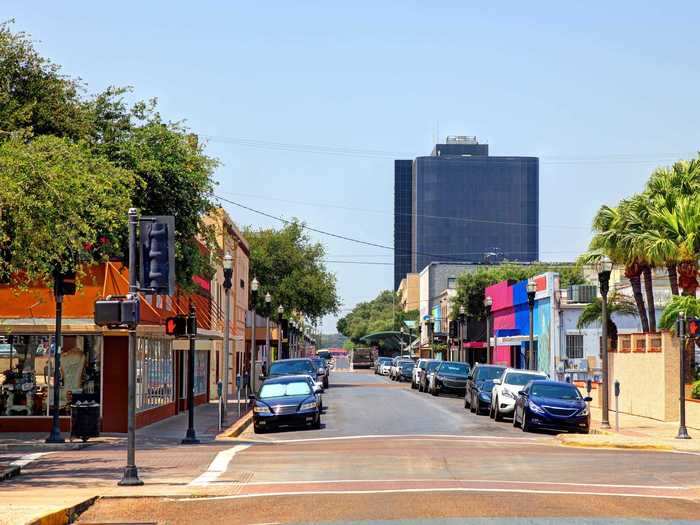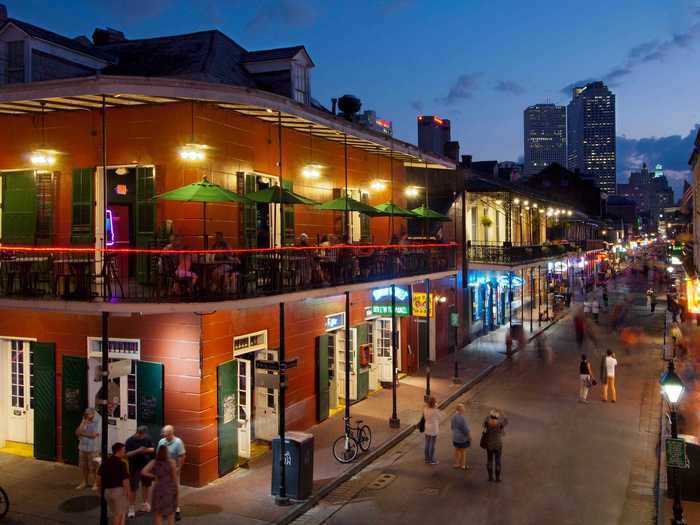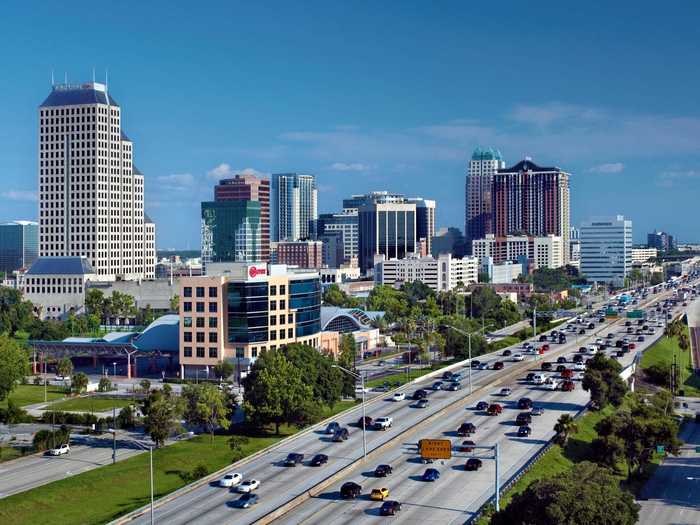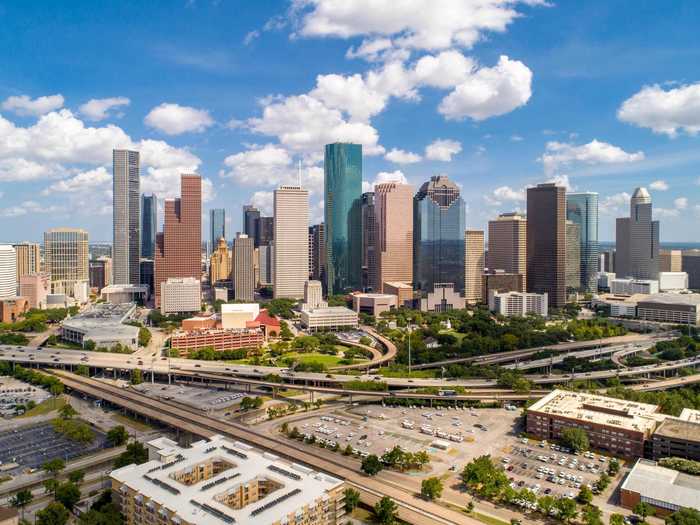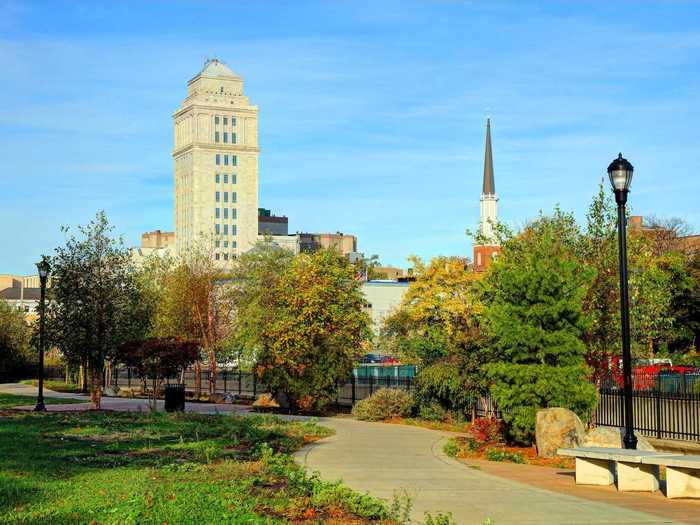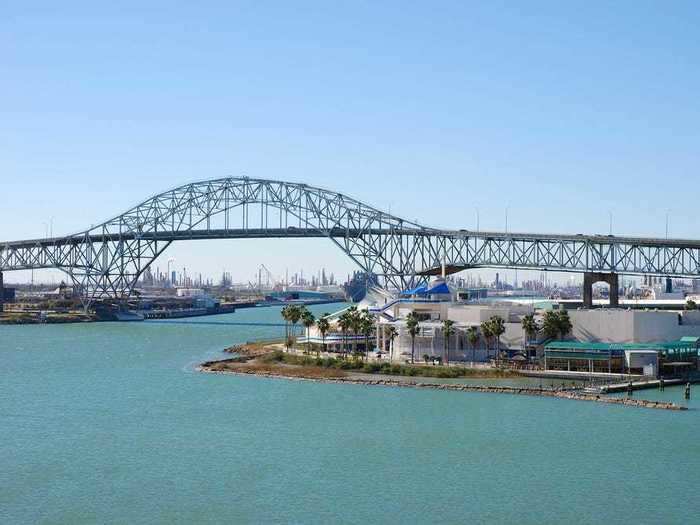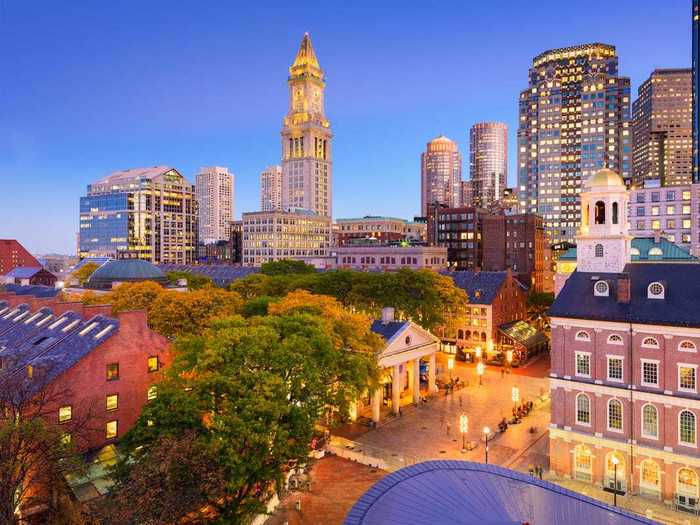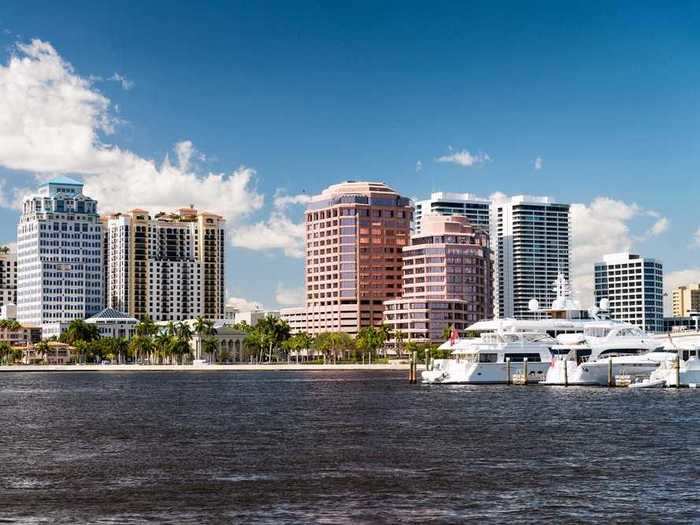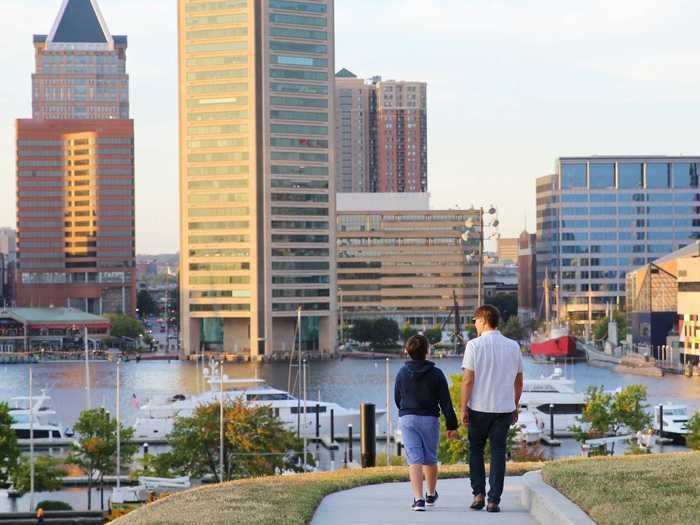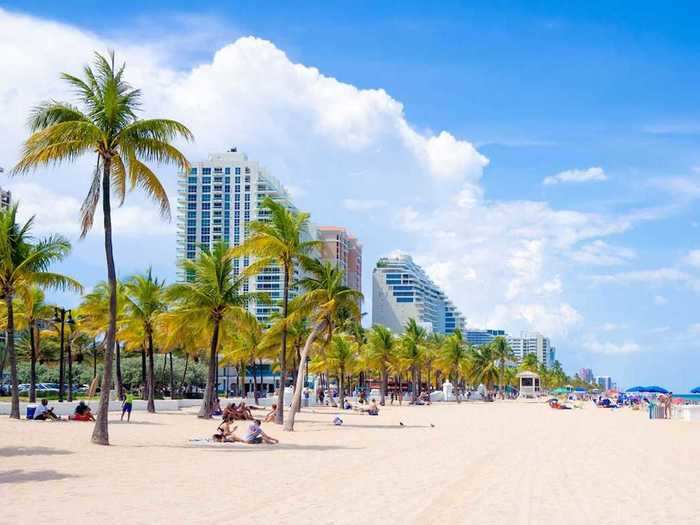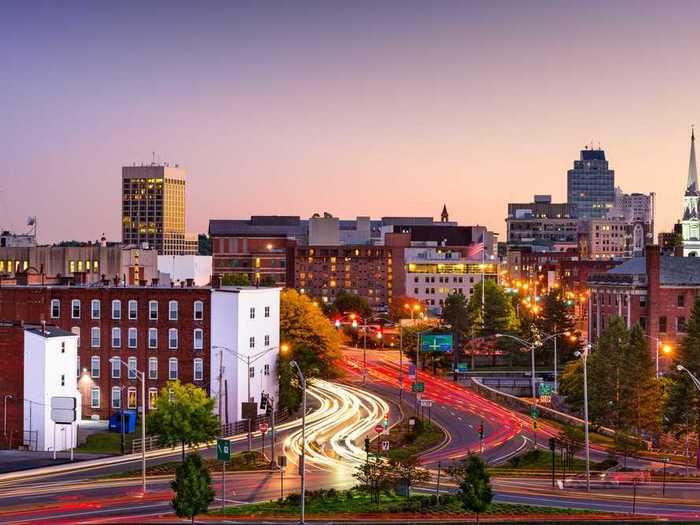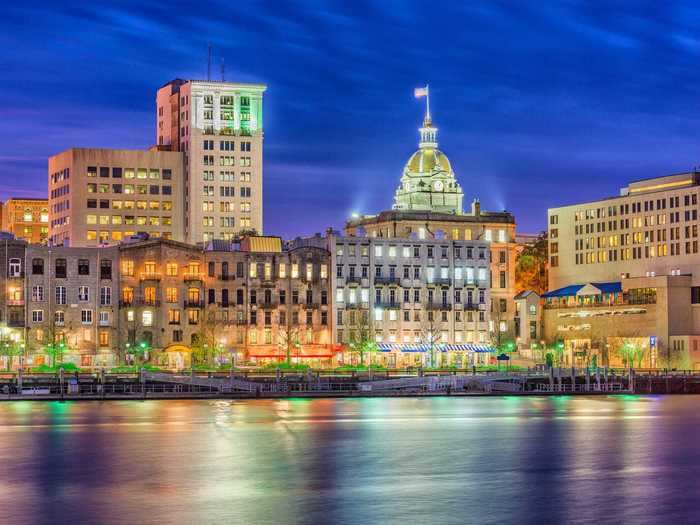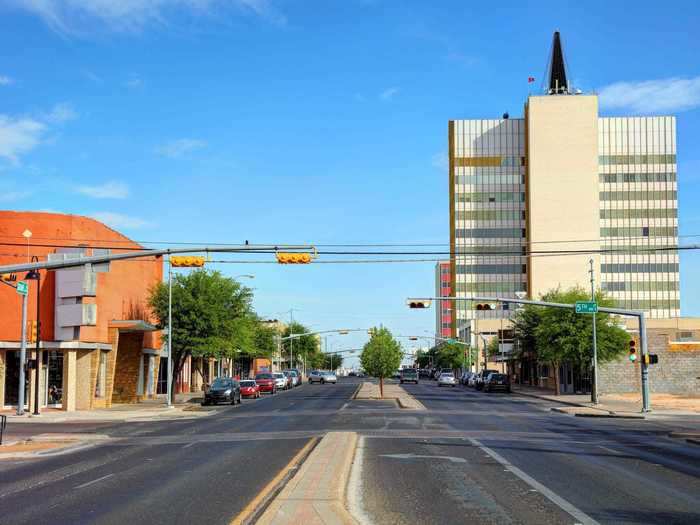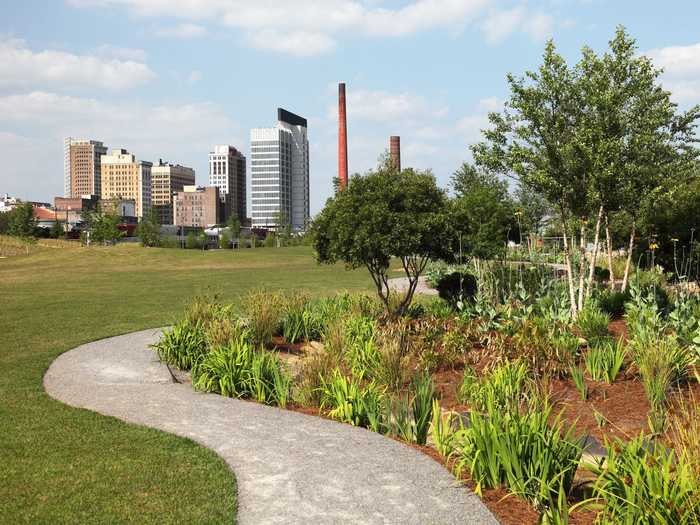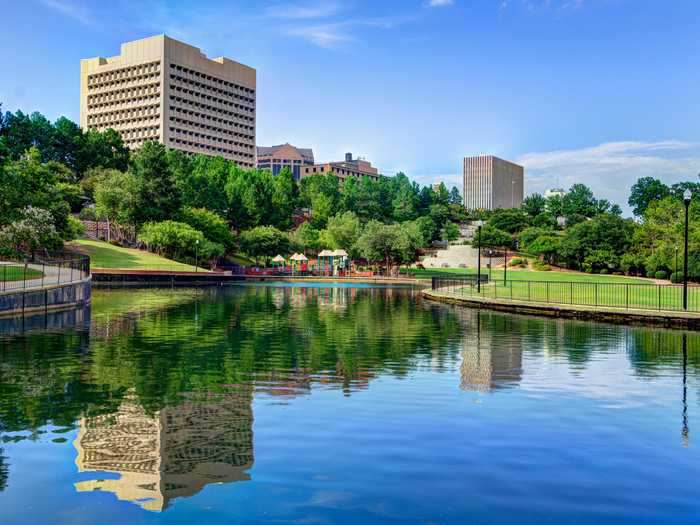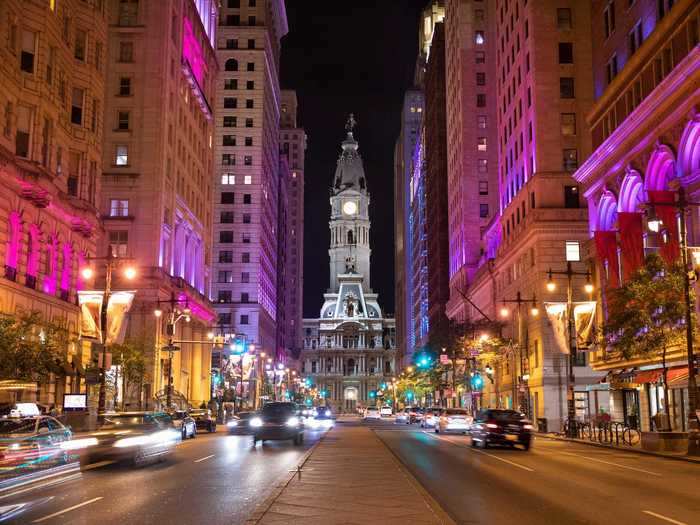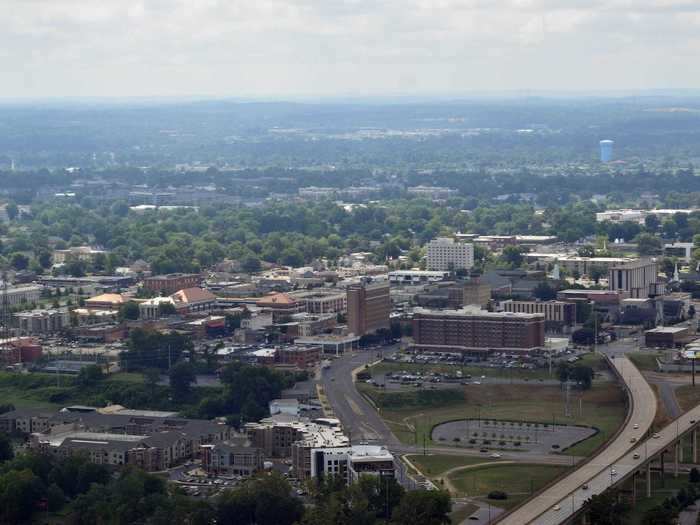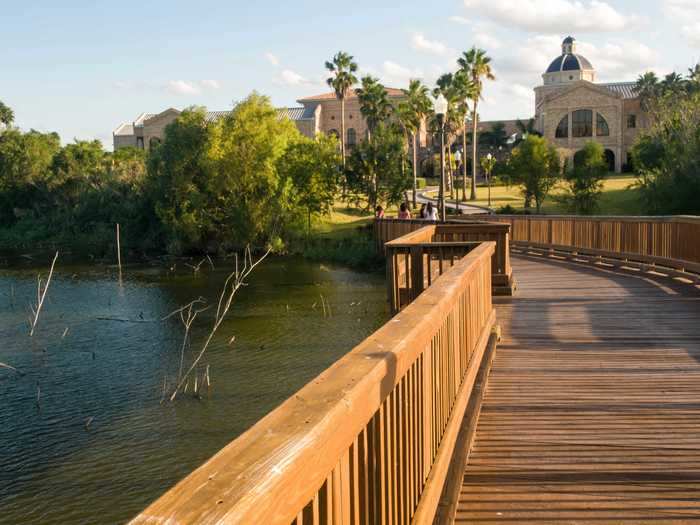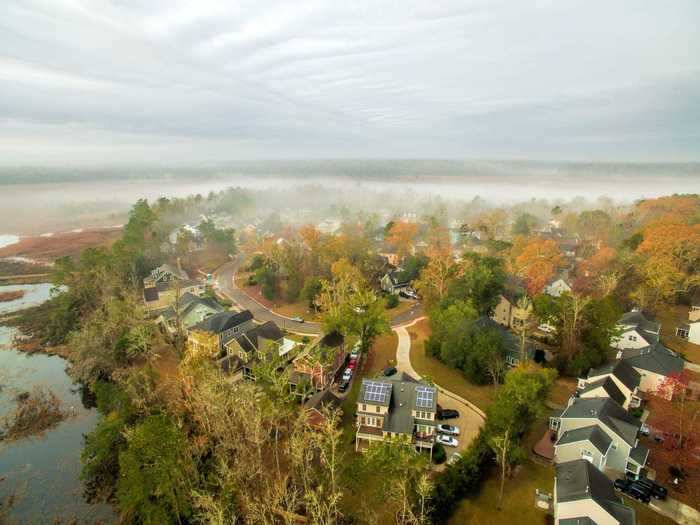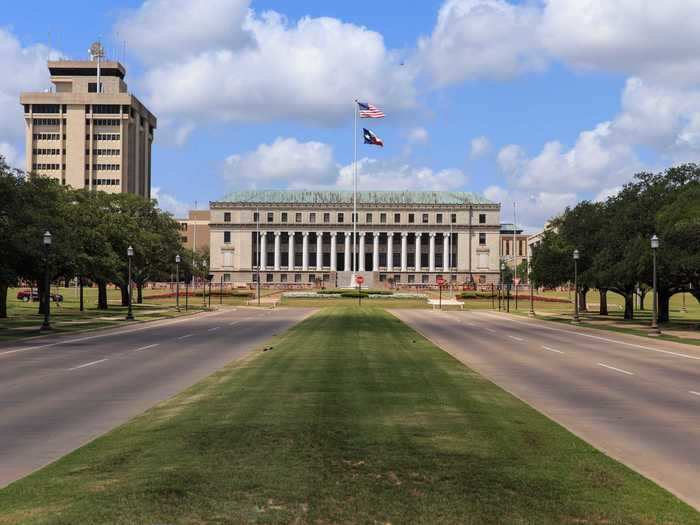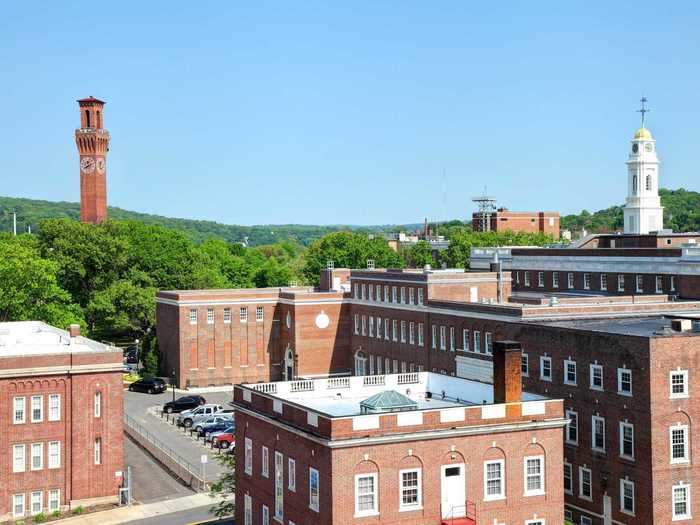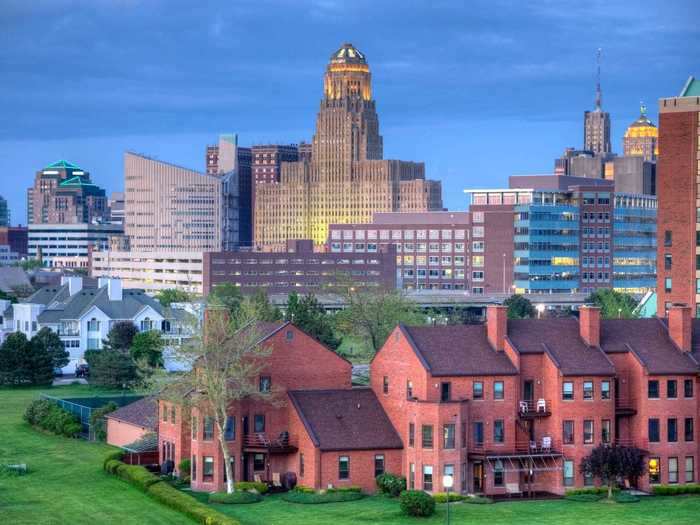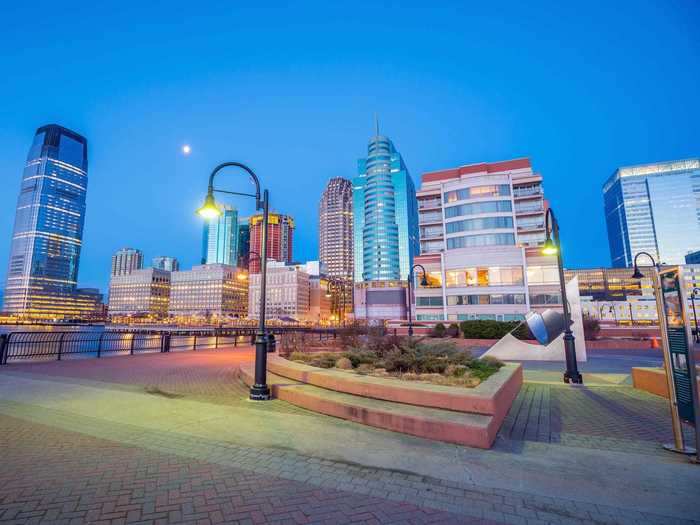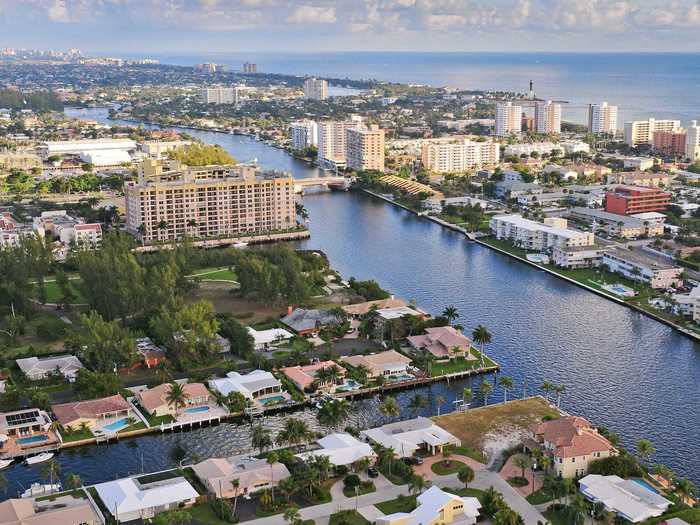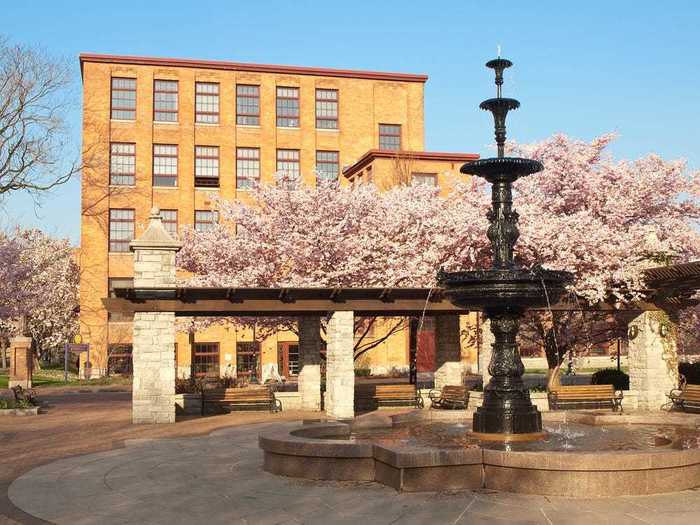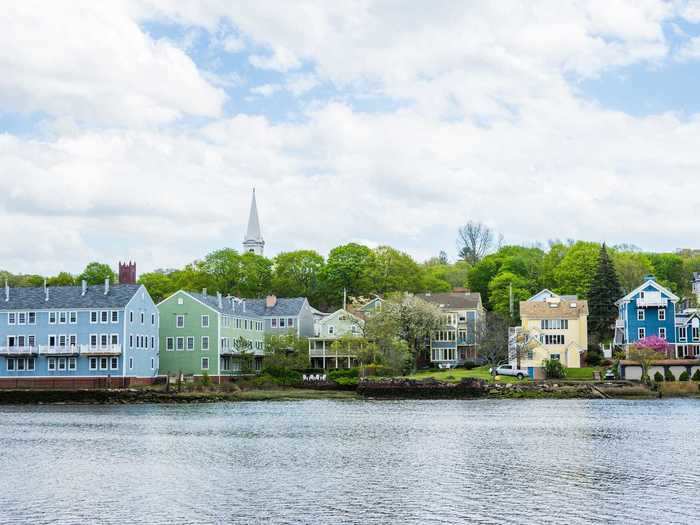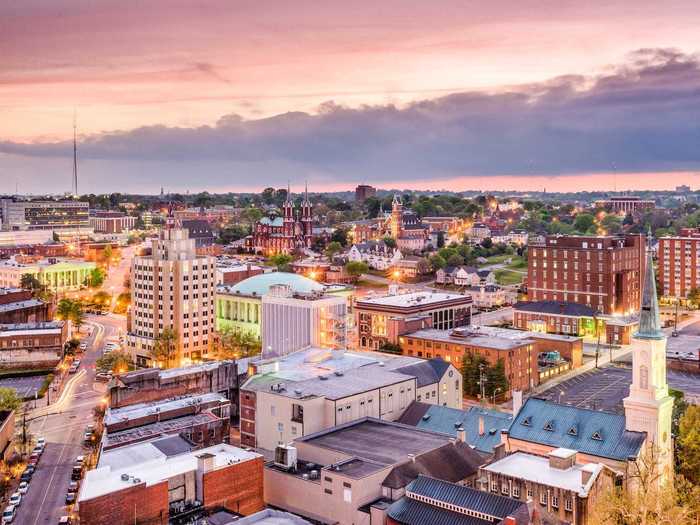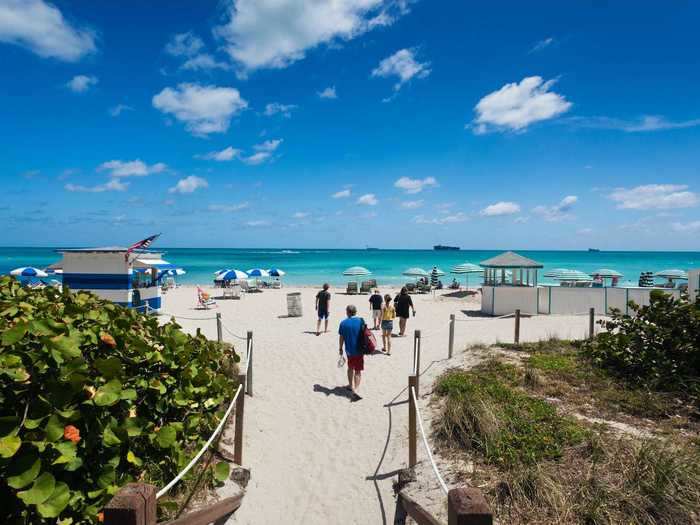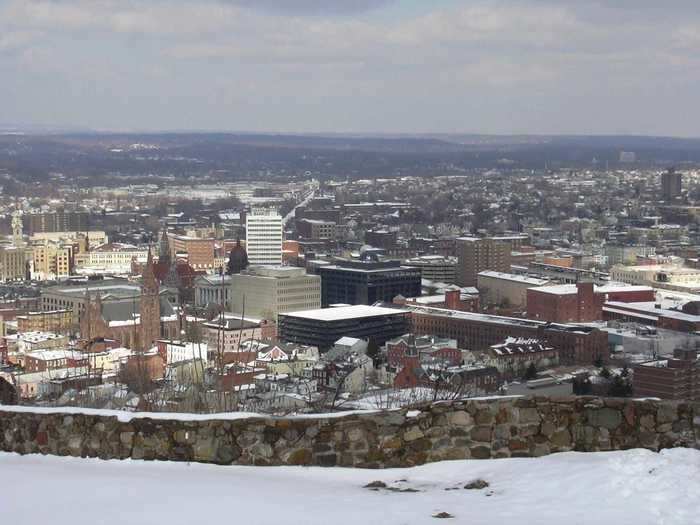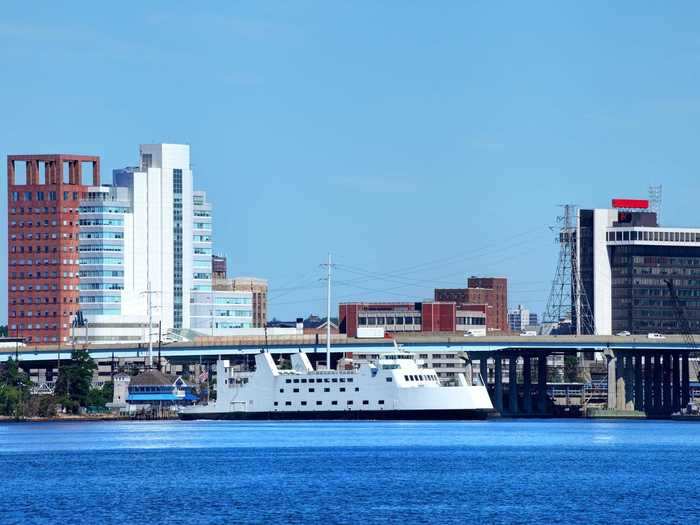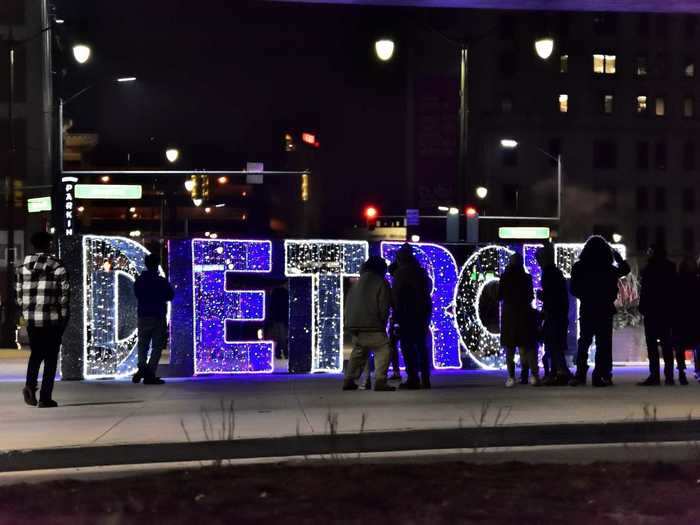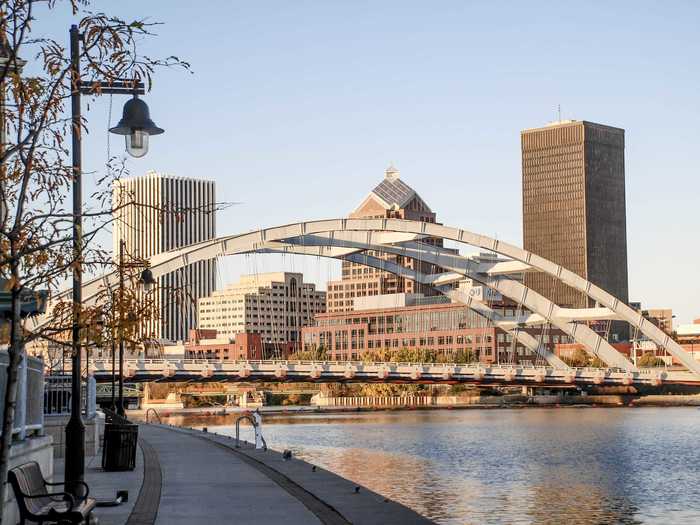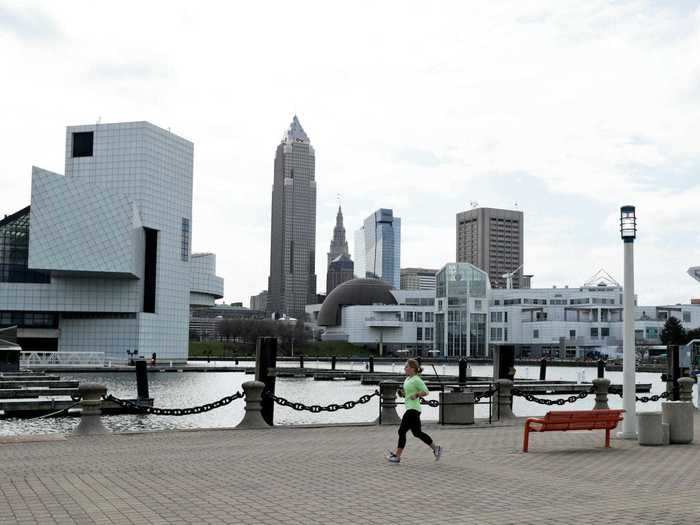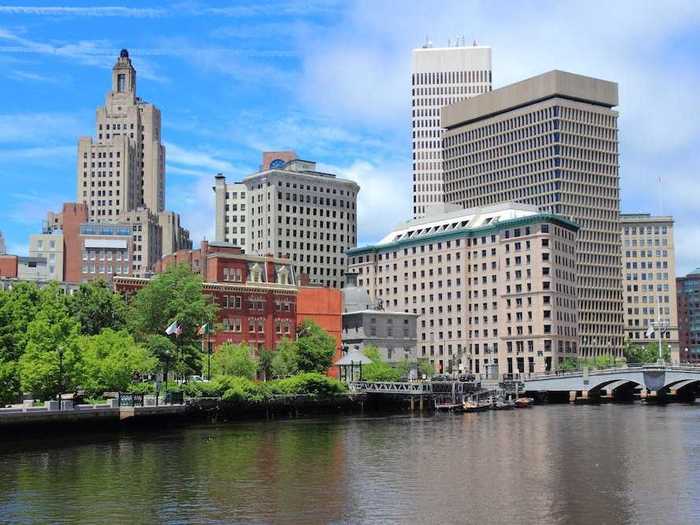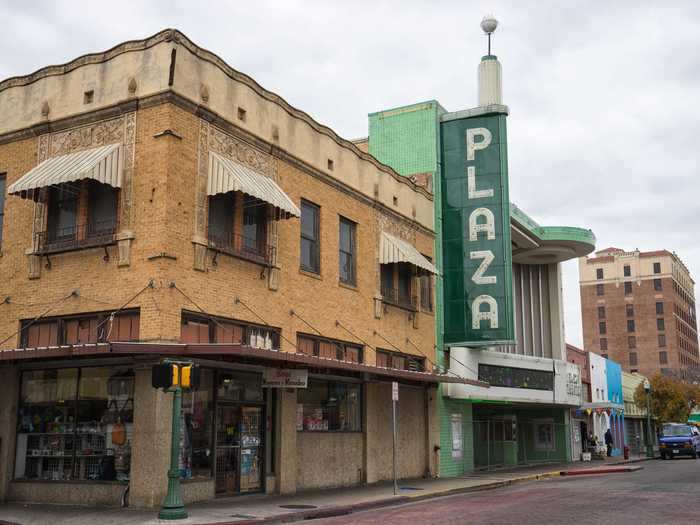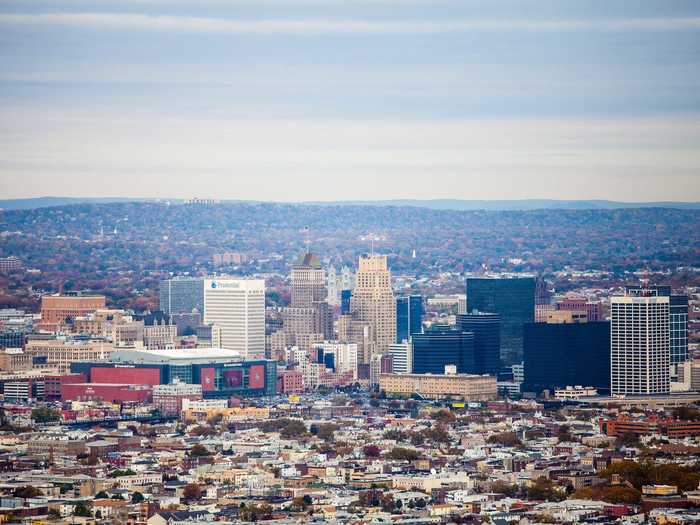Some large US cities only have had about half of their households self-respond to the Census so far.Boston Globe / Contributor/Getty Images
- The 2020 Census is well underway, with only a few more months to self-respond to the once-a-decade count before the end-of-October deadline.
- Across the US, 62.1% of households have filled out the form as of July 13.
- The census count determines political representation, government funding, and an accurate picture of America's communities for the next ten years.
- Business Insider decided to look at the self-response rates for cities with at least 100,000 people to see where Americans still need to catch up on filling out the census.
- Hartford, Connecticut, has the lowest self-response rate of these larger cities, at 43.4%.
The deadline for filling out the 2020 US Census is October 31, and although the Census Bureau has made a big effort to make it easier for people to ensure they're counted, self-response rates in some areas across the US are still low.
The coronavirus pandemic has made it somewhat more difficult for the Census Bureau to get an accurate count. For instance, the Bureau had to temporarily suspend field operations and training early on during the outbreak, but the government agency has since announced it will resume in-person follow-up with some non-responding households this month. The Bureau has also pushed back deadlines to ensure there is ample time for every household to be counted.
The census count is extremely important to communities across the country because it will help determine political representation and government funding for the next ten years. The decennial count also provides a hopefully comprehensive and accurate picture of America's changing population.
The count is used to allocate seats in the US House of Representatives for the next decade, as well as state and local legislatures. Additionally, it is used to determine billions of dollars in federal funding, including for programs like daycare, hospitals, Medicaid, and school lunches. The decennial Census count is also one of the core tools public and private researchers alike use to understand America's demographic makeup.
Some areas still have low completion rates, including Chicago. To encourage residents to fill out their census forms, Chicago Mayor Lori Lightfoot said a "Census Cowboy" will visit 10 communities within the city that have low response rates. Chicago has a self-response rate of 54.7% as of July 13.
Because the self-response deadline for the decennial count is just a few months away in October, we decided to look at response rates at the city level.
We used household response rates published on the Census Bureau's website. Rates can be found at the state-, city-, and county-level, among other geographic divisions. We focused on cities with a population of at least 100,000 that had the lowest overall self-response rates as of July 13. All the cities on our list had self-response rates well below the national rate of 62.1%, marking them as falling behind other areas.
Of these large cities, only four had a self-response rate of at least 80%. Centennial, Colorado, had the highest rate, where 81.3% of households have already completed the census. On the other end of the spectrum, Hartford, Connecticut, had just a 43.4% completion rate, and Newark, New Jersey, was at just 44.4%, making those the two lowest rates among US cities with at least 100,000 residents.
Read on to see which cities had the lowest self-response rates. We also included the city's rates of completing the census by internet, as opposed to by mail or phone, as of July 13.
43 (tie). The household self-response rate in McAllen, Texas, is 53.7% as of July 13.
Denis Tangney Jr/Getty Images
Internet self-response rate: 43.7%
43 (tie). The household self-response rate in New Orleans, Louisiana, is 53.7% as of July 13.
John Coletti/Getty Images
Internet self-response rate: 42.8%
42. The household self-response rate in Dallas, Texas, is 53.6% as of July 13.
Nathanael Hovee / EyeEm/Getty Images
Internet self-response rate: 44.7%
41. The household self-response rate in Orlando, Florida, is 53.5% as of July 13.
John Coletti/Getty Images
Internet self-response rate: 47.2%
40. The household self-response rate in New York, New York, is 53.4% as of July 13.
Westend61/Getty Images
Internet self-response rate: 42.6%
39. The household self-response rate in Houston, Texas, is 52.8% as of July 13.
Duy Do/Getty Images
Internet self-response rate: 44.4%
37 (tie). The household self-response rate in Memphis, Tennessee, is 52.6% as of July 13.
Malcolm MacGregor/Getty Images
Internet self-response rate: 37.3%
37 (tie). The household self-response rate in Elizabeth, New Jersey, is 52.6% as of July 13.
DenisTangneyJr/Getty Images
Internet self-response rate: 41.9%
36. The household self-response rate in Corpus Christi, Texas, is 52.5% as of July 13.
Philip Lange/Shutterstock.com
Internet self-response rate: 39.6%
34 (tie). The household self-response rate in Boston, Massachusetts, is 52.4% as of July 13.
Sean Pavone/Shutterstock
Internet self-response rate: 44.5%
34 (tie). The household self-response rate in West Palm Beach, Florida, is 52.4% as of July 13.
GagliardiImages/Shutterstock
Internet self-response rate: 41.7%
33. The household self-response rate in Baltimore, Maryland, is 52.0% as of July 13.
Cyndi Monaghan/Getty Images
Internet self-response rate: 36.7%
32. The household self-response rate in Fort Lauderdale, Florida, is 51.9% as of July 13.
Kamira/Shutterstock
Internet self-response rate: 44.1%
31. The household self-response rate in Los Angeles, California, is 51.8% as of July 13.
Shutterstock
Internet self-response rate: 43.7%
28 (tie). The household self-response rate in Cincinnati, Ohio, is 51.7% as of July 13.
Adam Jones/Getty Images
Internet self-response rate: 39.5%
28 (tie). The household self-response rate in Worcester, Massachusetts, is 51.7% as of July 13.
Sean Pavone/Shutterstock
Internet self-response rate: 40.9%
28 (tie). The household self-response rate in Savannah, Georgia, is 51.7% as of July 13.
Sean Pavone/Shutterstock
Internet self-response rate: 40.7%
26 (tie). The household self-response rate in Odessa, Texas, is 51.5% as of July 13.
DenisTangneyJr/Getty Images
Internet self-response rate: 35.1%
26 (tie). The household self-response rate in Birmingham, Alabama, is 51.5% as of July 13.
DenisTangneyJr/Getty Images
Internet self-response rate: 33.1%
25. The household self-response rate in Columbia, South Carolina, is 51.3% as of July 13.
SeanPavonePhoto/Getty Images
Internet self-response rate: 41.4%
23 (tie). The household self-response rate in Philadelphia, Pennsylvania, is 51.1% as of July 13.
AevanStock/Shutterstock
Internet self-response rate: 37.5%
23 (tie). The household self-response rate in Tuscaloosa, Alabama, is 51.1% as of July 13.
Tracy Burroughs Brown/Shutterstock
Internet self-response rate: 40.7%
22. The household self-response rate in Brownsville, Texas, is 51.0% as of July 13.
Internet self-response rate: 37.9%
21. The household self-response rate in North Charleston, South Carolina, is 50.9% as of July 13.
Robert Loe/Getty Images
Internet self-response rate: 39.8%
20. The household self-response rate in College Station, Texas, is 50.6% as of July 13.
Tricia Daniels/Shutterstock
Internet self-response rate: 48.0%
19. The household self-response rate in Waterbury, Connecticut, is 50.0% as of July 13.
DenisTangneyJr/Getty Images
Internet self-response rate: 31.6%
18. The household self-response rate in Dayton, Ohio, is 49.7% as of July 13.
Internet self-response rate: 32.3%
17. The household self-response rate in St. Louis, Missouri, is 49.6% as of July 13.
f11photo/Shutterstock
Internet self-response rate: 38.8%
14 (tie). The household self-response rate in Buffalo, New York, is 49.4% as of July 13.
DenisTangneyJr/Getty Images
Internet self-response rate: 32.6%
14 (tie). The household self-response rate in Jersey City, New Jersey, is 49.4% as of July 13.
f11photo/Shutterstock
Internet self-response rate: 43.3%
14 (tie). The household self-response rate in Pompano, Beach Florida, is 49.4% as of July 13.
FloridaStock/Shutterstock
Internet self-response rate: 37.3%
12 (tie). The household self-response rate in Syracuse, New York, is 49.3% as of July 13.
debra millet/Shutterstock
Internet self-response rate: 34.5%
12 (tie). The household self-response rate in New Haven, Connecticut, is 49.3% as of July 13.
Christian Hinkle/Shutterstock
Internet self-response rate: 36.8%
11. The household self-response rate in Macon, Georgia, is 49.1% as of July 13.
Internet self-response rate: 35.1%
10. The household self-response rate in Miami, Florida, is 48.5% as of July 13.
Miami, Florida
Walter Bibikow/Getty Images
Internet self-response rate: 35.9%
8 (tie). The household self-response rate in Paterson, New Jersey, is 48.0% as of July 13.
Shutterstock
Internet self-response rate: 34.5%
8 (tie). The household self-response rate in Bridgeport, Connecticut, is 48.0% as of July 13.
DenisTangneyJr/Getty Images
Internet self-response rate: 32.2%
7. The household self-response rate in Detroit, Michigan, is 47.9% as of July 13.
Detroit, Michigan
TracieMichelle/Getty Images
Internet self-response rate: 28.0%
6. The household self-response rate in Rochester, New York, is 47.5% as of July 13.
Internet self-response rate: 33.9%
5. The household self-response rate in Cleveland, Ohio, is 46.9% as of July 13.
Tony Dejak/AP
Internet self-response rate: 29.3%
4. The household self-response rate in Providence, Rhode Island, is 46.5% as of July 13.
Tupungato/Shutterstock
Internet self-response rate: 34.5%
3. The household self-response rate in Laredo, Texas, is 46.2% as of July 13.
Internet self-response rate: 33.7%
2. The household self-response rate in Newark, New Jersey, is 44.4% as of July 13.
Mary A. Brown / Getty Images
Internet self-response rate: 34.7%
1. The household self-response rate in Hartford, Connecticut, is 43.4% as of July 13.
Sean Pavone/Shutterstock
Internet self-response rate: 27.1%

